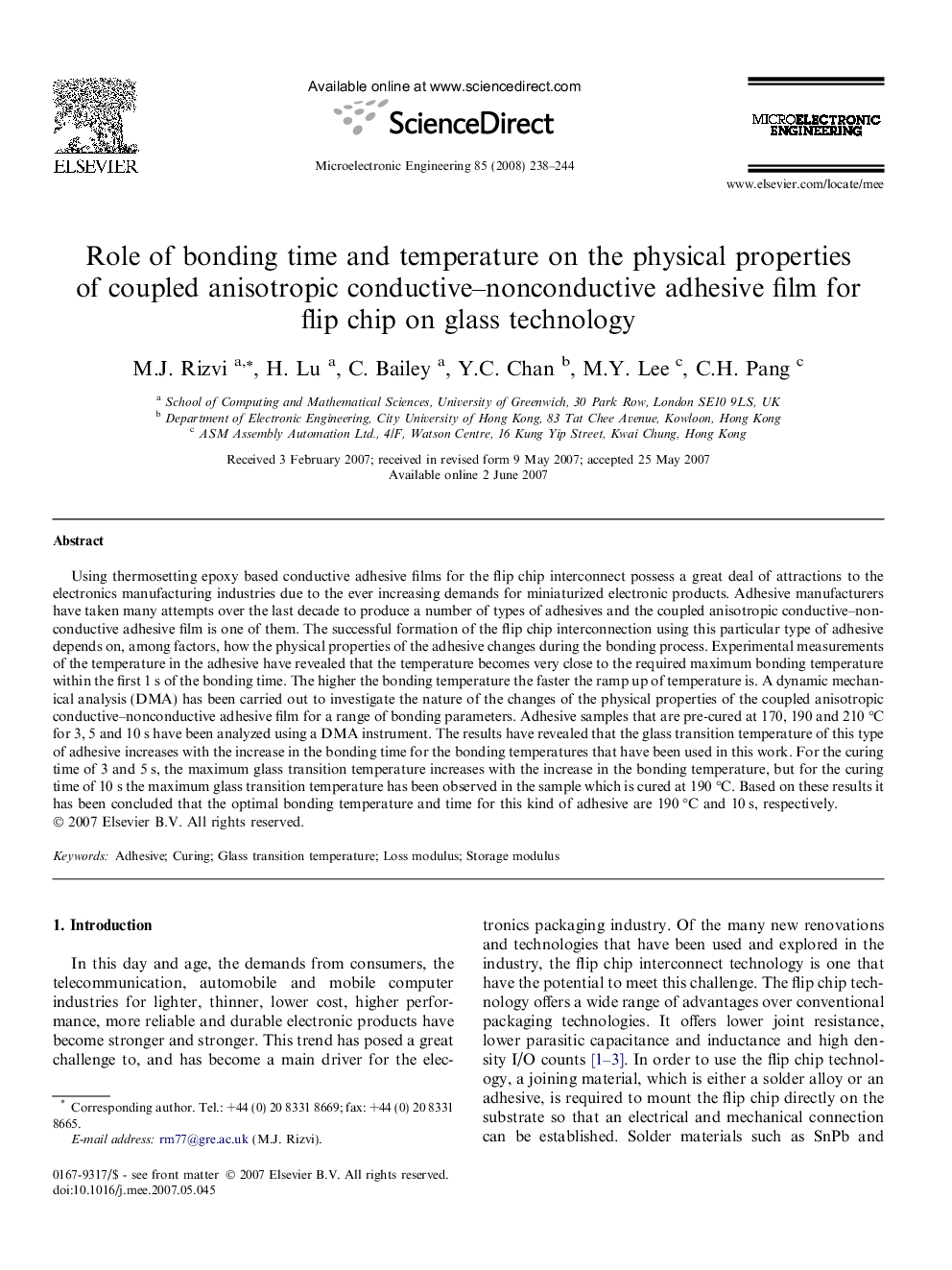| کد مقاله | کد نشریه | سال انتشار | مقاله انگلیسی | نسخه تمام متن |
|---|---|---|---|---|
| 541719 | 871484 | 2008 | 7 صفحه PDF | دانلود رایگان |

Using thermosetting epoxy based conductive adhesive films for the flip chip interconnect possess a great deal of attractions to the electronics manufacturing industries due to the ever increasing demands for miniaturized electronic products. Adhesive manufacturers have taken many attempts over the last decade to produce a number of types of adhesives and the coupled anisotropic conductive–nonconductive adhesive film is one of them. The successful formation of the flip chip interconnection using this particular type of adhesive depends on, among factors, how the physical properties of the adhesive changes during the bonding process. Experimental measurements of the temperature in the adhesive have revealed that the temperature becomes very close to the required maximum bonding temperature within the first 1 s of the bonding time. The higher the bonding temperature the faster the ramp up of temperature is. A dynamic mechanical analysis (DMA) has been carried out to investigate the nature of the changes of the physical properties of the coupled anisotropic conductive–nonconductive adhesive film for a range of bonding parameters. Adhesive samples that are pre-cured at 170, 190 and 210 °C for 3, 5 and 10 s have been analyzed using a DMA instrument. The results have revealed that the glass transition temperature of this type of adhesive increases with the increase in the bonding time for the bonding temperatures that have been used in this work. For the curing time of 3 and 5 s, the maximum glass transition temperature increases with the increase in the bonding temperature, but for the curing time of 10 s the maximum glass transition temperature has been observed in the sample which is cured at 190 °C. Based on these results it has been concluded that the optimal bonding temperature and time for this kind of adhesive are 190 °C and 10 s, respectively.
Journal: Microelectronic Engineering - Volume 85, Issue 1, January 2008, Pages 238–244